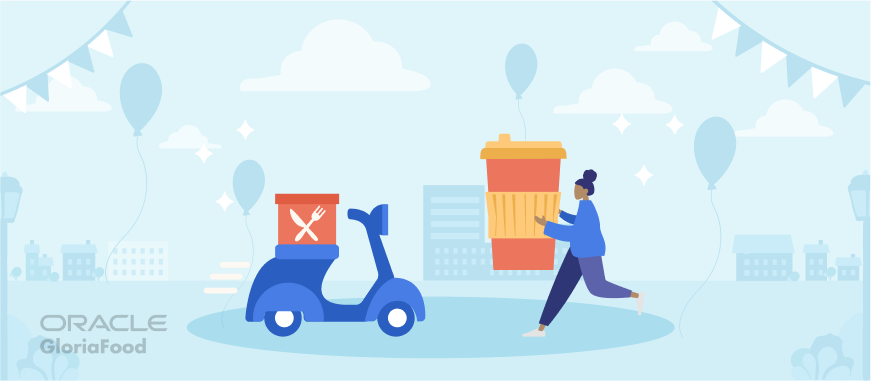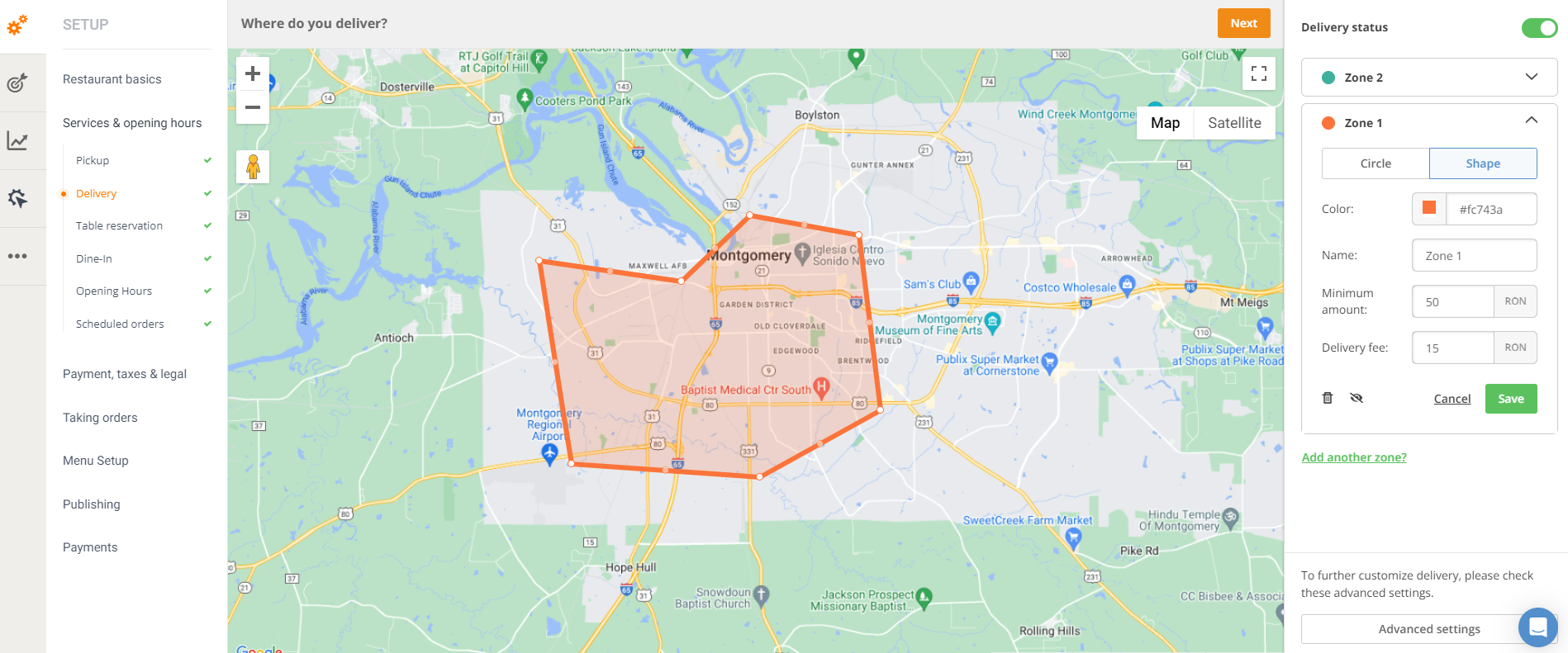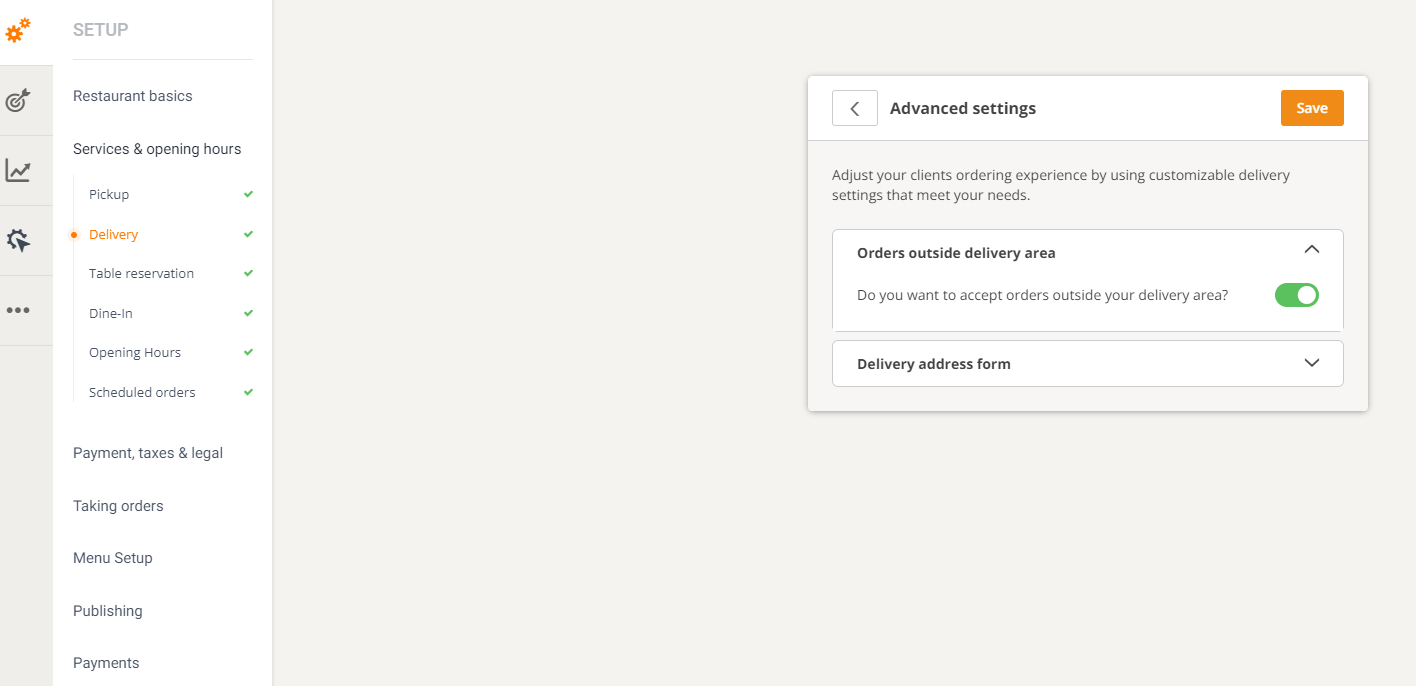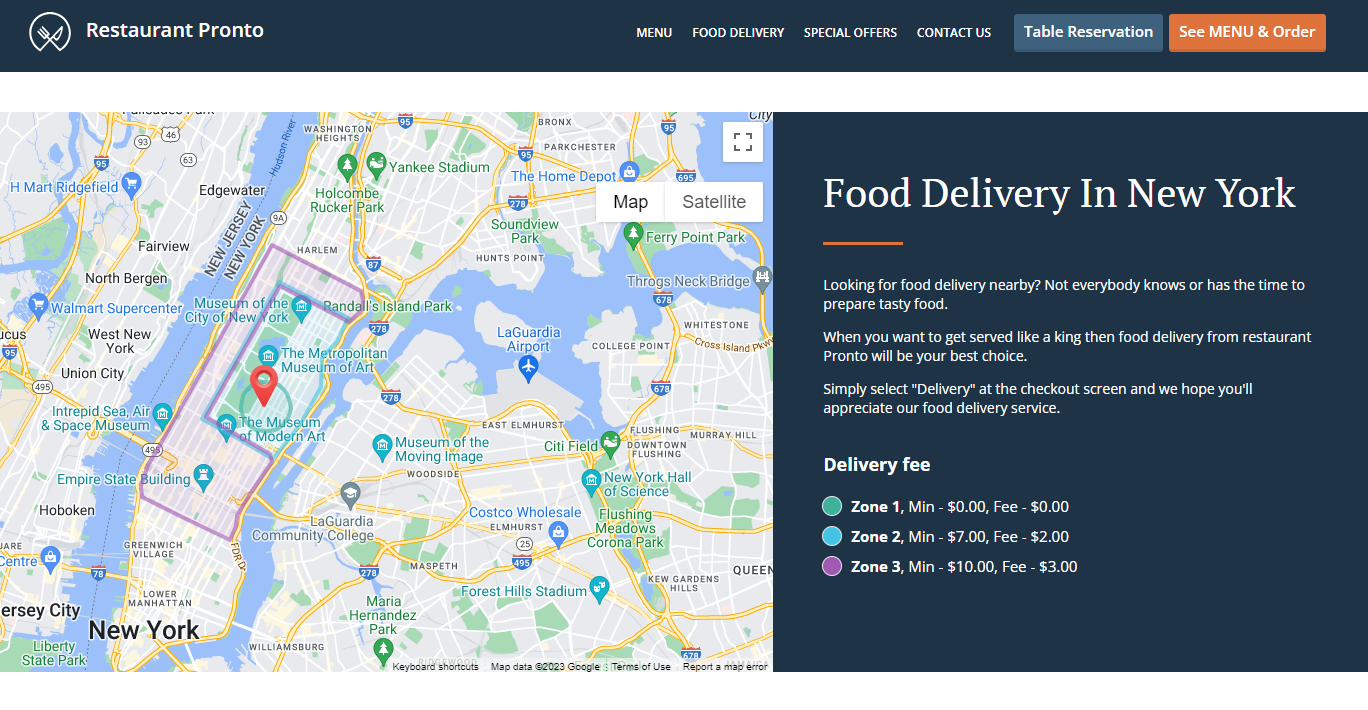Researchers forecast that 2.6 billion people will use meal delivery services by 2027. This means there is a huge market of people interested in ordering food online that you can tap into to increase your sales.
While getting people into your restaurant is a great first step, you need the money from online orders to keep your restaurant profitable long-term. But, allowing people to order online comes with some extra costs that may eat into your budget, like the restaurant delivery fee.
In this article, we’ll go into detail about your delivery options and how to get the most bang for your buck.
What Types of Delivery Are Available for Your Restaurant?
While some of your clients may be near your restaurant and opt for pick-up, most people would like their food to be delivered directly to their door. Therefore, offering delivery is a must for happy clients.
There are three main ways to employ delivery at your restaurant:
- In-house delivery with your own drivers
- In-house delivery with on-demand drivers
- Third-party delivery
In-house delivery with your own drivers
In this case, you will need two main things: an online ordering system to accept and manage online orders and a delivery fleet to get the food safely to your clients.
Advantages:
- You have control over the whole process, from the moment you accept the order until the delivery reaches the customer;
- You manage your brand identity by training your drivers and ensuring they offer excellent customer service and speedy delivery; With external drivers, you risk clients forming the wrong opinion about your restaurant from a bad delivery experience;
- Reduced costs in the long run because you won’t have to pay exorbitant commissions to third-party apps for every order.
Disadvantages:
- Significant initial costs because you will have to pay for the mode of transport (especially if you purchase your own car, scooter, or bicycle) and other items needed to deliver the food securely (bags, helmets);
- It requires more effort in the beginning when you will be setting up logistics and planning the most efficient routes.
How to price the restaurant delivery fee for clients:
To get a fair estimate of the delivery fee, we recommend you add up the following costs and divide them by the number of orders your fleet can deliver in a specific period, such as a day or a week:
- Cost of fuel
- Cost of vehicle insurance and maintenance
- Drivers’ salaries
- Miscellaneous costs such as parking fees
In-house delivery with on-demand drivers
If you choose this option, you will still need an online ordering system with a medium where people can order (like your restaurant’s website) and a partnership with a company that handles on-demand delivery.
Advantages:
- You can rely on your online ordering system to ensure there are no errors that lead to unhappy customers and negative reviews;
- You save on delivery fleet costs like hiring drivers and acquiring vehicles. These costs can be a lot for a small restaurant at the start;
Disadvantages:
- Increased external costs as you will have to pay a flat fee per order. You will have to rethink your menu items’ pricing to ensure profitability;
- You don’t have direct control over the drivers so you risk getting customer complaints that you can not solve.
How to price the restaurant delivery fee for clients:
When you sign the contract with the on-demand delivery service, you get the flat fee you must pay for every order.
You can now choose how the price you pay translates to the delivery fee for clients. Here are the options:
- You make the restaurant delivery fee for clients equal to the flat fee;
- You can set a smaller delivery fee for clients and adjust the menu prices to make up for it.
Third-party delivery
If you don’t want to take care of the online ordering process yourself, you can choose to sign up for a third-party delivery app and have it take care of your delivery business. While the low effort may seem tempting at first, the huge commissions will eat into your profit long-term.
Advantages:
- Access to new customers: hungry clients who may not have heard of your restaurant before can stumble over your profile and be tempted by your menu items;
- No need to manage a delivery fleet: the third-party app will show your products, contract a driver, and have them pick up the order and deliver it to your client. You only have to accept the order, prepare it, and hand it to the driver.
Disadvantages:
- Big costs: you won’t just have to pay a restaurant delivery fee. There will also be commissions and many new or even hidden costs the app can spring on you. Moreover, they also practice different delivery fees for your clients which can lead to dissatisfaction;
- It may hurt your brand image: when a client has a problem with the app or with the delivery, you won’t be able to fix the problem. But the damage is done, and unhappy clients tend to share their negative experiences;
- You get lost among your competitors: a third-party delivery app lists countless restaurants. If you are unlucky and yours is somewhere at the bottom, clients won’t even see it.
How to price the restaurant delivery fee for clients:
If you are using a third-party delivery app, you don’t get a say in what the delivery fee will look like for your clients. The app will choose a price depending on the distance, driver availability, weather conditions, etc.
How Much Do Delivery Apps Charge Restaurants?
There are many delivery apps out there, but only some of them will be available in your area. We’ve compiled a list of the most popular third-party delivery apps and the restaurant delivery fees they practice:
- Uber Eats: there are three plans with varying prices. For the cheapest, you pay a 15% fee for delivery orders and a 6% fee for pickup orders. For the most expensive, you pay a 30% fee for delivery orders and a 6% fee for pickup orders;
- GrubHub: the marketing fee starts at 15% for the cheapest plan and at 25 % for the most expensive one (includes the delivery fee)
- PostMates: between 15-30% commission and a direct deposit fee from 0.80% up to $5;
- DoorDash: between 15 – 30% delivery fee and a 6% pickup fee.
How to Reduce Your Restaurant Delivery Fees
The sweet spot for your restaurant would be to find a way in which you can reduce the restaurant delivery fees for both you and your clients. This way, you can maximize client satisfaction while increasing your business’s profit.
We have the perfect solution: the free online ordering system from GloriaFood. For starters, it allows clients to order directly from you (67% of clients prefer to order directly from the restaurant):
- On your website: we can also provide you with a sales and SEO-optimized restaurant website. It will gently lead people to the ordering button and tempt them with a tasty menu;
- On social media: you can add a link to your social media profiles that, when clicked, directs clients to your online restaurant menu so they can place an order;
- Using a branded mobile app: you can use our system to get a native app that clients will find extremely easy to use to order their favorite food;
When you receive an order, you can easily confirm it from the order-taking app. Then, offer clients an estimated time of arrival (pro tip: clients expect their orders to arrive no later than 30 minutes).
To get your delicious food to clients, you just need to choose between having your own driver fleet or using an on-demand driver service. If you can afford it, training your employees for delivery efficiency will ensure clients are more satisfied with your restaurant.
If you want to reduce the restaurant delivery fees for you and your clients, we recommend you set up clear delivery zones and ensure they are visible on your website. We’ll show you how easy it is with GloriaFood.
After you create an account and set up basic information like name, address, and type of cuisine, go to Setup -> Services & opening hours -> Delivery.
Here, you will be able to trace your delivery zones, either in circles or shapes, and set a minimum order amount and a delivery fee.
You can set up multiple delivery zones with different fees. The farther the address is from your restaurant, the bigger the delivery fee. That is because it must cover the fuel and the time spent on the road.
You can also click on the Advanced setting in the bottom right corner and select if you want to accept orders from outside your delivery zones. Furthermore, you can personalize the form clients must complete with their addresses.
To avoid any miscommunication, we recommend you have your delivery zones visible on your website. If you use the restaurant website builder from GloriaFood, you will have a section dedicated to the delivery information.
Final Words
Managing costs at your restaurant is imperative if you want to remain in business long-term. While signing up for third-party delivery systems is hugely promoted, the big costs and the brand image risks are not worth it.
If you want to reduce your restaurant delivery fee, take advantage of our free online ordering system. Then, pair it with your preferred delivery fleet, either in-house or on-demand.



